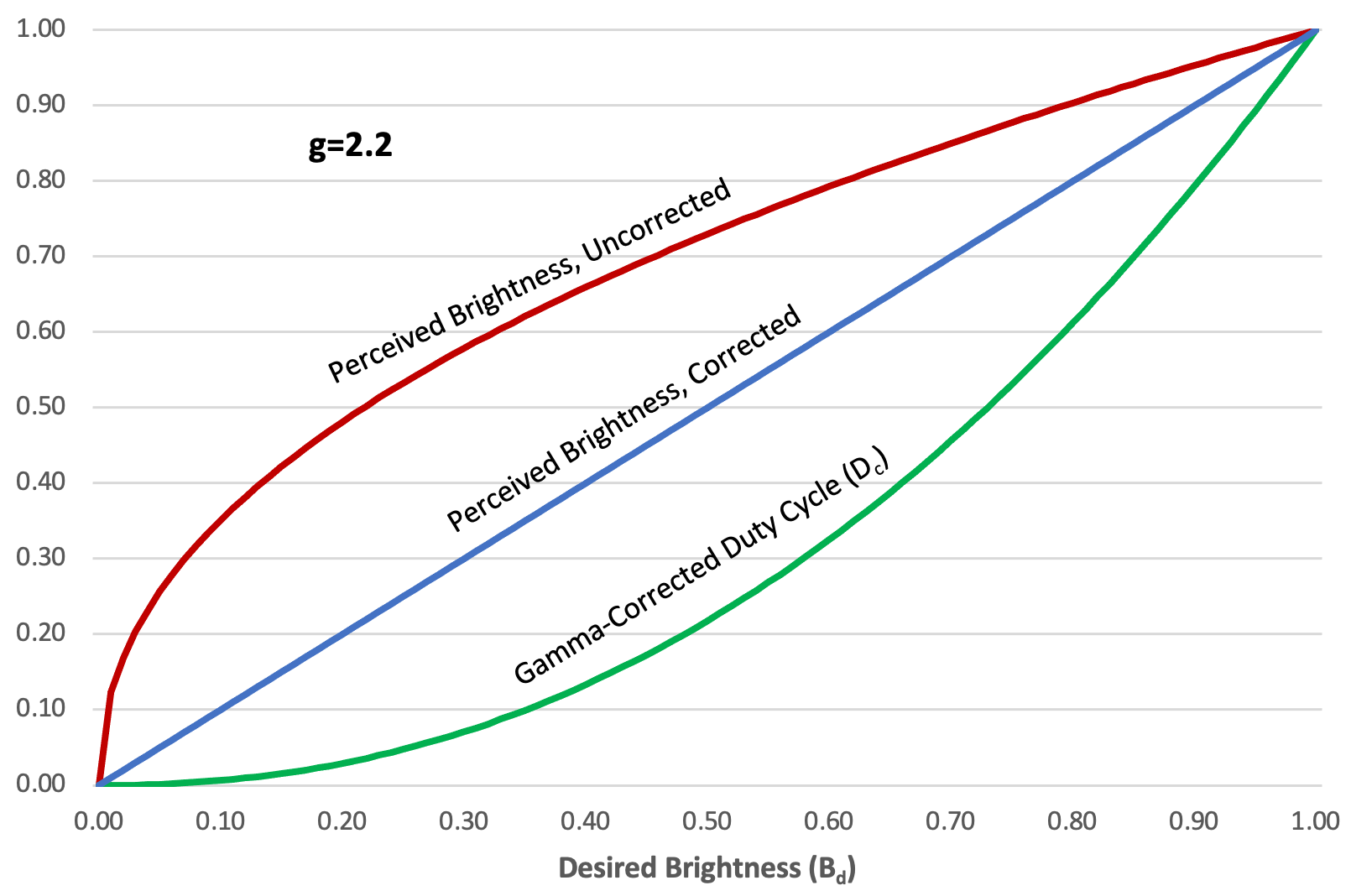We use gamma correction to linearize the perceived brightness of a light source when created via PWM, especially in relation to other light sources around.
This is because even though PWM driving of LEDs results in a linear control of the amount of light outputted by the LED (luminous flux driven by average current), the human-perceived brightness does not change linearly.
For example a +5% duty cycle change from 5% to 10% which results in a +5% increase in average current through the LED, thus a +5% increase in luminous flux (actual “brightness”) might result in a 7% change in perceived brightness. We use gamma correction to linearize the perceived brightness output to the PWM input (see graph below).
I came across this when researching ways to drive large arrays of seven segments similar to the hexboard project here.

Source https://electricfiredesign.com/2022/11/14/gamma-correction-for-led-lighting/